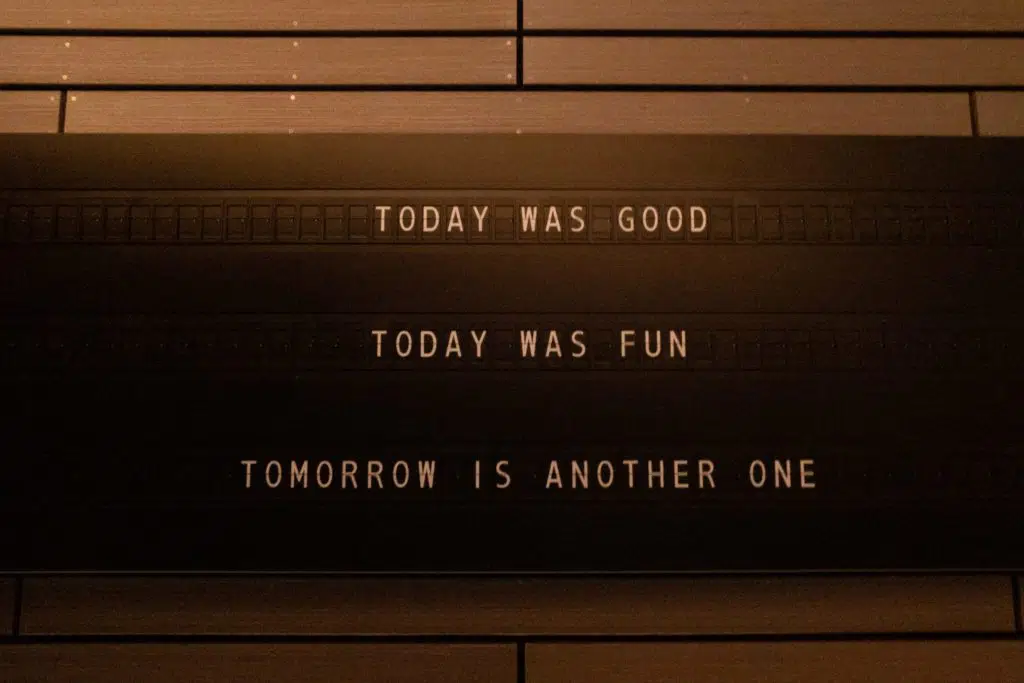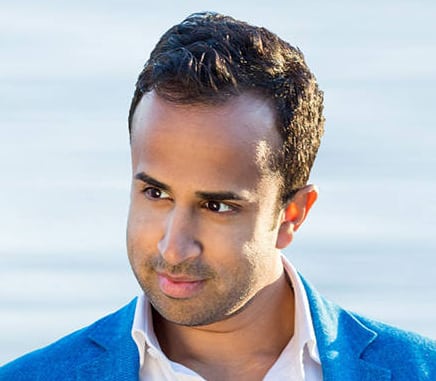Are you struggling to make a mark in your executive coaching business? Are you waiting for a magic wand that can help you succeed? Then you are at the right place and at the right time in your career.
I don’t promise to give you a magic wand but I can share some of the key strategies of top executive coaches that can transform your executive coaching career and give you skyrocketing growth.
In case you are still confused and are not sure how to become a coach then do read this –Become a coach: Pursue your true calling
Let me start with my experience as a coaching mentor.
A few months back, a manager from a renowned organization approached me as he was struggling with the team to achieve new goals. I understood something was going wrong.
If things were not improved soon, it would thwart the manager’s ability to contribute to the organization. I had a meeting with him to understand his problems and see where he was going wrong.
Firstly, the feedback from the team was collected to know how the manager was doing. Later, the printout of the feedback was given to the manager. He went through it in detail and wrote a short brief on each major point.
I helped the manager in tackling one theme at a time. Continuously, we used to meet wherein I guided him in reaching goals.
All the themes were addressed systematically. Six months passed and again the feedback was taken from the team. This time response was different. They had positive reviews.
This is indeed an effective example of how top executive coaches form strategies, implement it and create an impact on the life of an entire team.
Do you always look for strategies of top executive coaches? Do you always wonder how they reach top positions?
I will share all the key strategies of top executive coaches which will give you insight into your executive coaching business.
In Brief : Understand The Strategies Of Top Coaches
- Solve The Issues – Executive coaching involves guiding senior managers through problem-solving by asking questions that lead to greater clarity, understanding, and self-discovery; the emphasis is on fostering long-term solutions rather than offering quick fixes.
- Find Out Innovative Ways – Utilizing insights from coaching sessions can transform leaders, as seen in the example of a publishing company founder who, through coaching, transitioned from a knowledgeable individual to an inspiring leader, emphasizing the importance of innovative leadership skills.
- Set Realistic Goals – Effective coaching helps individuals set realistic goals aligned with organizational success, as demonstrated by an app developer who shifted focus from creating a good app to gaining recognition for the company, showcasing the impact of well-defined objectives.
- Apply The Hidden Strengths Effectively – Executive coaches identify and encourage the effective use of hidden strengths, illustrated by a product manager who, with coaching, harnessed his expertise in predicting successful products, resulting in organizational growth and the creation of popular products.
- Slow Down In Between – The coaching approach acknowledges the need for leaders to occasionally slow down, preventing burnout and fostering mental harmony, with coaches advising clients to take breaks, unplug from work, and connect with nature for increased effectiveness.
- Deal With Tough Times – Coaching assists organizations facing challenges, such as declining turnover, by promoting empathetic communication, trust-building, and team engagement strategies, ultimately leading to positive transformations and improved company performance.
- Build Teams Through Self-Involvement – Executive coaches emphasize the importance of leaders actively participating in teamwork rather than solely instructing, fostering a sense of security and encouraging team members to give their best.
- Develop Emotional Intelligence – Coaching addresses emotional intelligence, guiding individuals like Robin, a manager with emotional triggers, to recognize and manage their emotions, enhancing interpersonal relationships and overall effectiveness.
- Give Statements – Coaches advocate for clear and specific communication to avoid misunderstandings, recommending the use of statements to make conversations simple, direct, and conflict-free.
- Build A Sense Of Ownership – Coaches help leaders like Sara develop a sense of ownership, encouraging regular feedback, accountability, and a focus on activities that contribute to organizational goals, resulting in improved performance and time management.
- Build Strong Connections – Coaches guide clients in building strong connections by adapting their communication style to match the preferences of others, fostering rapport and effective understanding.
- Avoid Negative Assumptions – Executive coaches encourage a neutral perspective to avoid negative assumptions, enabling individuals to recognize and appreciate diverse approaches, fostering better relationships and understanding.
- Ensure Goals Are Backed By Visions – Coaches stress the importance of aligning goals with visions and passions, emphasizing the “why” behind goals to provide motivation and direction.
- Share Leadership Stories – Storytelling is a powerful coaching tool, inspiring and encouraging individuals, as seen in the example of a client launching a gadget successfully after being motivated by the coach’s leadership stories.
- Be Transparent – Coaches promote transparency within teams, fostering trust and accountability through open communication and sharing of values and thoughts.
- Develop Proper Communication Styles – Effective coaches modify communication styles to enhance understanding and rapport, adapting their approach to suit the individual needs of clients.
1. Solve the issues
A senior manager in an MNC was facing a problem in achieving company targets. He approached me to solve this issue and after listening to it, I realized it was not difficult to handle. I decided not to give him a short-term solution. I understood his problems and asked a few questions. My questions gave clarity to his problems and then he could find solutions to his problems.
Top executive coaches do not just simply give advice, they involve their coach and make them think out of the box. Let your clients get to the root of the problems to find solutions. They have to spend some time to understand their problems, as clarity will help them to find better solutions.
2. Find out innovative ways
A famous executive coach, Marshall Goldsmith, has written an amazing book- ‘What Got You Here Won’t Get You There’, on effective coaching. Don’t forget to check out the book.
The book’s name is exactly the strategy that implies in today’s scenario. Some years back, I got the opportunity to train a smart founder of a publishing company which was just a start-up.
She had the skills and ability to achieve goals but lacked in bringing her team together. She attended my executive coaching training sessions to unearth her potential. I suggested to her that although she is a knowledgeable person her team also needs proper direction.
They can only work in sync if she tries to inspire them. I was able to help her and informed her that success now depends not only on the quality of her work but also on her ability to inspire her team.
With time, her mindset changed and now she is more expert in leadership skills.
3. Set realistic goals
Do you know what exactly your goals are or how you can achieve them? What obstacles you may face?
You need to ask these questions to the person whom you are coaching.
An app developer named Henry in one of the renowned App development firm faced a problem in the development stage. His goal was to make the app better. But my idea was different. I wanted his company to get recognition and not just create a good app.
For this, I had to provide a lot of inputs and feedbacks. The result was he got recognition for his creation in the digital world. Also, there were various awards collected in the company’s kitty.
Don’t you feel it enhances the value of your journey towards the goal?
Same is the case when people are in their early stage of business, they try to unearth their actual goals. Various top executive coaches are there to help them in creating the milestones along with tools to track it.
Many years ago, an expert product manager attended my coaching sessions. He was an expert in understanding which products would appeal to the mass shortly.
For him, it was not a big deal and didn’t realize his potential. Here my role as an executive coach came in the picture.
Why do you need to neglect your strengths when they can help you grow? I pushed him to use his capabilities effectively and understand how valuable they are.
It helped him in growing his organization and reaching more people. He tried some amazing products which are now worldwide popular.
You can also check What’s Wrong with Your Executive Coaching Strategy to know about your strategy failures.
5. Slow down in between
Leaders, managers and workforce work on 24/7 schedule. Although it has increased the output, the pressure has accelerated too.
Imagine a workplace where people are working continuously but not connected in any form. Will this team sustain for a longer time?
How will you guide such a team? Even if the team is working effectively, it needs some time to slow the pace and prevent the stage of burnout.
Top executive coaches have said ‘you need to slow down to speed up’. Can you remember a time when you had unplugged yourself from work and spent time with nature?
I suggest many of my clients- watch a sunset or enjoy the things around you. It works and their mind is in complete harmony when they take back the control.
6. Deal with tough times
In 2016 a multinational company contacted me as they were struggling with decreasing turnover. I was appointed as an executive coach to mentor their top executives so that the company can be on track again.
I conducted sessions on ‘how to bring employee engagement’.
So, what do you think, which strategy you should apply here?
Firstly, talk to your employees and be empathetic. Next, maintain eye contact to build trust.
You can involve phrases in your conversation such as “I get it or I’ve been in such situation”. Avoid beating around the bush as well as making the situation feel dire.
Avoid being judgemental. So, what more you need to do differently? I advised the managers to spend 15 to 30 minutes with every team member.
This action helped them to think as a team and they took bold steps to bring the change. Then what? The company’s performance soared high and this time the company knew the importance of employee engagement.
The above event turned fruitful as every team member understood how sharing a thought without engagement proves meaningless.
Another suggestion I gave to one of the executives was to close the office door every day for 15 minutes. Advised him to tell everyone not to disturb for some time. Also, I asked him not to attend any phone or email. It is known as, no contact time.
I informed him this is the time when he should work on issues that require attention on an immediate basis. It worked wonders and he applied this in future too. This strategy I took from most dynamic and top executive coach Jeff Wolf.
7. Build teams through self-involvement
I found in my coaching career that many managers were more into instructing rather than being part of the team. This is where strategies of top executive coaching come in the picture.
It is a lot easier to say than to perform the task.
If you want to build a strong team then you have to involve in the work that your team does and not just instruct.
I have built many teams for my clients by involving myself in teamwork.
The teams realized that I did not want to put them in any trouble and that I was ready to tackle the situation.
This gave them a sense of security and encouraged them to give 100% to their work.
8. Develop emotional intelligence
There are times when you regret after giving commitments. You need to ask three questions as suggested by Craig Ferguson
Does this need to be said?
Do I need to say this?
Is it the right time to say this?
With the right questions, you can prevent regrets. But the question is why every organization is concerned about engaging executive coaches to help them develop Emotional intelligence behaviors?
According to Goelman, Emotional Intelligence is, “the capacity for recognizing our feelings and those of others, for motivating ourselves, and for managing emotions well in ourselves and our relationships.”
Let us understand it through an example.
Robin, a manager in a software company used to avoid discussions about deadlines. This used to trigger him emotionally.
Robin was unaware of this and people around him tried to keep a distance. Hence, he needed an executive coach which could make him realize this.
A coaching program was conducted in which Robin realized that his behavior was creating conflicts with his teammates.
The coach here trained Robin to work on his emotions. He came to know which emotions are driving his behaviors.
Many executive coaches are not trained to assess the emotions and never identify them. Thus, it leads to behavioral change-puzzle.
So, as an executive coach learn to deal with the behavior of your clients.
Like Robin, a person also needs to develop the ability to effectively think as well as act. Thus, it is often suggested to distinguish between positive and negative emotions.
9. Give statements
If you give people blunt feedback, chances are high they may feel it harsh. What top executive coaches do in such cases?
Let us say you want to give suggestions to someone. Then, you can say, “Lisa, I have some amazing ideas about new projects. It might prove beneficial.
Can I share my views now or if we can discuss in the evening?” This means you are being specific and clear.
Clear statements make communication easy and simple, without creating any conflicts. This is the key to start any conversation.
Don’t forget to check out 20 Most effective coaching techniques as these techniques can make your executive coaching practice more effective and successful.
10. Build a sense of ownership
Let me share an incident here.
Sara, the President of the HR Company was unable to manage her time properly. She was wasting time reacting to smaller issues. In actual, she was not looking at the bigger picture.
Further, Sara could not keep the focus. She spent more time fixing the problem rather than discussing it with the employees.
As a result, she was wasting her time. Her loyal employees were not given proper direction and they remained underperformers. She didn’t like people giving her advice. Also, she was not able to give feedback.
Here came the strategies of top executive coaches. The first and foremost thing which Sara was asked to do was give daily or weekly feedback to employees. This led to accountability.
Now she talked with her team members more often and guided them in the right direction. What if she had just instructed them once a year? Employees would have freaked out. Isn’t it?
Employees were further questioned why they did not follow the policies and apply quality control techniques on time. Proper training was the need of an hour. Sara did all this under the guidance of an expert coach.
What worked here was the scientific approach to the problem. It helped in making the sales double and let Sara get time to focus on various projects. The executive coach understood the human behavior well and so Sara’s weakness was identified at the right time.
More emphasis was given on what activities an executive should do and what not.
During this process, the coach showed Sara two scenarios. The first one was in a positive direction. How in case of plan A, Sara’s team would benefit? Conversely, what are the adverse effects if plan A does not work? Lastly, the critical phase came where the progress was checked.
11. Build strong connections
Do you feel hesitated when you meet someone for the first time? In such cases, you need to find clues as to how the person would like to start the conversation.
I suggested one of my clients start the interaction the way preferred by another person. This way the person will also try to share thoughts as per your preference. Voila, you can build a strong connection with this first step.
The Key To Effective Coaching is a must-read to understand effective coaching skills which can bring a massive change in your coaching programs.
12. Avoid negative assumptions
It often happens people who think deliberately feel that the person thinking too fast is impulsive and vice versa. How to avoid such negative assumptions? Top executive coaches feel such assumptions hinder the growth of the business.
There was this client who often remained serious and thought logically. She would often judge people and label a person unprofessional whom she found playful.
However, when she came to know how productive the playful person is she realized her fault. Instead of thinking others as less professional she started thinking that people are not like wired like her.
She looked at it neutrally. This helped her in increasing productivity and improving relationships at her workplace.
So, always try to avoid negative assumptions as they are not constructive and may hinder to build strong connections.
13. Ensure goals are backed by visions
Always add why behind your goals. What if the person who you want to coach lacks the action plan or vision? Just imagine a rugby coach trying to bring in coordination among each player’s movement without a predetermined plan.
For instance, top executive coaches always ask why you created the goals.
Are your goals matching with your team member’s view?
Are they in sync with the organizational plans? What will happen if desired results are not achieved?
Ensure goals are backed by passions and visions as these will drive you and your clients to achieve the goals.
How top executive coaches use their leadership story? Why do they implement it?
There are various reasons for it. I commonly use this when my clients plan to launch new projects.
I adopted this strategy from top executive coach Warren Bennis who stated about crucible stories. These are the challenges or difficult period of life which lead to new learnings.
In 2018, one of my clients planned to launch a new gadget. He was full of anxiety and doubted whether he can launch it or not. He asked, a series of questions to himself- “Can I pull it off? Will I be successful in developing it? How am I going to accomplish it?”
He approached me with all his doubts to mentor him. All I did was shared some of my inspiring stories to remind him that with his team he can accomplish the task.
Guess what? The stories which I shared, encouraged him and gave him clarity and confidence. He then launched the gadget successfully and won Best employee award that year.
Aren’t stories so powerful? So, don’t forget to inspire your clients through stories.
15. Be transparent
One must foster transparency within the team by asking questions like:
Do I frequently allow others to know me?
Have I shared my values and thoughts to team members?
Am I clear in making decisions?
All these build trust and form a stronger bond with your team.
Let us look at Success Story of Alabama Power which applied an amazing coaching approach.
Various organizations have applied this strategy.
Here it goes…
Alabama Power (APCO) is a renowned electric company in Alabama. Due to the deregulation of the power market, it was facing major changes. Hence, it developed an executive coaching part of the organization.
In 1997, APCO implemented the executive coaching approach. All the members of the company including the president and senior managers were part of the development program. Trainers were trained so that the effects of the program would pass down through the organization.
The best thing was that each participant was coached to become a coach in the future. It emphasized on the key point that all executive team members will be coaches for other team members. After the training, they were transparent enough to share all the tricks and strategies which they learned.
The whole process resulted in an improvement in leadership skills, collaboration, and effective coaching. Even the Chief Information officer stated that it was the best year for APCO.
16. Develop proper communication styles
For better rapport and effective understanding, top executive coaches modify their communication style.
For example: while cupping hands properly during swimming, the coach may ask the coachee to pretend that he or she is petting a dog. This way the person can apply the correct swimming form.
So, to make the coaching fruitful you have to modify communication styles as per your clients.
Bottom Line:
To fully train the team, executive coaching is an essential tool. For instance, a coach lets the manager deal with office politics by giving insight related to the behavior of peers.
Executive coaches guide the team to improve performance, develop skills, reduce the stress level, build confidence, increase innovation and much more.
Frequently Asked Questions (FAQs)
What are the strategies of coaching?
There are many coaching strategies that can help teach people how to reach their goals. The primary strategy of coaching is focused on behavioral changes that lead to lasting change. One strategy is focusing on the positive aspects of an individual’s behavior, where there is a session with the coach about reinforcing these aspects.
What makes an effective executive coach?
There are many qualities that can make an effective executive coach, but perhaps the most important are intelligence, perceptiveness, leadership, and maturity.
What should you focus on with an executive coach?
Executive coaches work with executive level employees and assist them in pinpointing and addressing areas of potential stress or improvement. The first step is to sit down and discuss your goals and the challenges you face day-to-day as well as any external factors that may be affecting your professional growth.
What knowledge do executive coaches need?
Executive coaches need knowledge of conflict management, career development, team building, and performance evaluation. They work on every level of the corporate ladder with diverse clientele who range from CEOs to interns. A new industry survey reports that while corporate professionals are looking for support with their progress, new executive coaches also need help learning their new-found profession.
What are the goals of executive coaching?
Executive coaching aims to help executives overcome these challenges by being objective with them to learn new skills, develop working habits, and increase productivity. This increases overall growth for both an individual and their team. Executive coaching can help executives overcome challenges by being objective with them to learn new skills, develop working habits, and increase productivity.
What is the best way to use executive coaching?
The best way to use executive coaching is to identify the unique needs of the individual so that they can execute their goals. A coach needs to work with their client in order to identify their strengths and weaknesses to create an achievable coaching plan.














You always provide great examples and real-world applications.